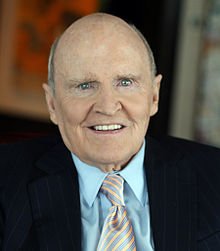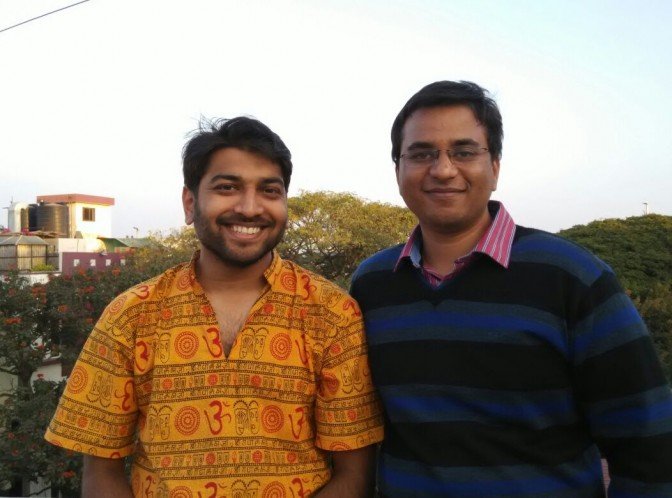Need for Learning Organization
 As organizations grow, they lose their capacity to learn as company structures and individual thinking becomes rigid. It is critical in today’s global competitive marketplace for an organization to maintain its position in a rapidly changing environment. A learning organization is one that has a heightened capability to learn, adapt, and change. A learning organization can acquire and apply knowledge faster than the competition and therefore maintain a leading edge.
As organizations grow, they lose their capacity to learn as company structures and individual thinking becomes rigid. It is critical in today’s global competitive marketplace for an organization to maintain its position in a rapidly changing environment. A learning organization is one that has a heightened capability to learn, adapt, and change. A learning organization can acquire and apply knowledge faster than the competition and therefore maintain a leading edge.- Shared Vision – Gives a real sense of purpose to employees
- Team Learning – Team Learning is the process of aligning and developing the capacity of a team to create the results its members truly desire
- Systems Thinking – Requires people to view the structural aspects of organizational performance rather than individual performance
- Personal Mastery – Without Personal Mastery, individuals and organizations are unable to continue to learn how to create
- Organizational Learning – It is team learning, not individual learning, that adds to organizational learning
- Remember that corporate learning is “informal” and HR doesn’t own it
- Promote and reward expertise
- Unleash the power of experts
- Demonstrate the value of formal training
- Allow people to make mistakes
- Benefits of Learning Organizations
- The employees develop
- Teams and groups work better
- The organization performs better
Boundary-less Organization
The Need

Jack Welch believed that rigid, hierarchical organizations were poorly structured to compete in the fast-moving, information-centric, customer-focused competitive environment of the 1990s and beyond. He also recognized that General Electric’s people, and especially their diversity of knowledge, talents, and ideas could become a tremendous competitive weapon for the company in the new business environment. Work-Out, GE’s boundary-breaking program of the early 1990s, made GE into a boundaryless company and launched boundarylessness both as a management philosophy and a potential field of study. Boundarylessness was seen along four dimensions: vertical, horizontal, external, and geographic. Although all four dimensions are important in the boundaryless literature, the horizontal and vertical dimensions are most important for the understanding of boundarylessness at General Electric because those were the two dimensions concerned with day-to-day interactions among coworkers.
Jack Welch wanted a work environment where people could react quickly to any situation and people together attacked problems quickly and efficiently. Empowering people to make decisions at the lowest level and creating an environment that gave them the ability and flexibility to be actively involved in creating efficient process improvements required the removal of barriers that prevented ideas or process improvements before they could be explored. This was the need that was felt at GE during the 1980’s for the implementation of boundaryless organization.
How GE Does it ?
- Town meetings (Recombination Labs)
- Generating and implementing ideas
- To educate employees to the freedom they have in making decisions and to encourage them to do so
- Pointing and Pushing at General Electric
2.Negative pointing and pushing
It has been seen that at GE negative pointing and pushing is prioritized over positive pointing and pushing. In positive pointing and pushing good habits and ideas are identified and employees are pushed towards it whereas in negative pointing and pushing bad iseas and habits are identified and employees are pushed away from it.
Contemporary Indian Organisation with Learning Culture
1.Tata Steel
Tata Steel became a Learning Organization by implementing KM (Knowledge Management) strategy in different phases
- Phase1: Mainly focused on awareness, processes design, system design and launch of KM portal
- Phase2: Knowledge communities’ kick-off & security system in KM portal introduced
- Phase3: KM index introduced, community index introduced, “Ask expert” launched
- Phase4: Linkage with different portals, quality index, introduced knowledge across value chain
- Knowledge contribution by an individual
- Ask Author (portal)
- Ask Expert (portal)
- Knowledge usage
- Communities of Practice
- Content Management
|
Strategic objectives
|
Knowledge Management imperatives
|
|
Plan and expeditiously implement power project
|
Improve engineering and project construction lead time past knowledge & experience
|
|
Operate power stations economically and efficiently
|
Reduce operations and maintenance costs and improve work practices by sharing ideas
|
|
Diversify and grow into new areas
|
Capture external knowledge and leverage experiential knowledge for commercial purposes
|
- Develop NTPC into a learning organization by creating a culture of knowledge sharing
- Build an environment of trust & openness
- Reduce employee effort to seek knowledge and experience
- Reduce lead time in business processes and day-today activities
- Reduce cost through sharing of ideas and best practices across plants
References:
- “5 Keys to Building a Learning Organizations”, Josh Bersin, Forbes (Jan 2012)
- “Learning Organisations”, University of Edinburgh
- “A Primer on the Learning Organization”, Canada Public Service Agency (Feb 2007)
- “Learning Organizations”, Columbia University
- Sam Falk, 2001. Organizational Evolution in a “boundaryless” organization. Massachusetts Institute of Technology
[The article has been written by Bhupesh Yadav. He is a mechanical engineer with 3 years of experience in Oil and Gas industry and an MBA from FMS, Delhi. ]
You might like reading:
Consistency is the key, Kaushik Agate NMIMS Mumbai (2016-18)
Interview with Kaushik Agate NMIMS Merit Rank: Core 586 Firstly, congratulations on converting your call to NMIMS. Our readers would like to hear something about your background? Hello all, I did my mechanical engineering from Mumbai University. Post- graduation, I worked for 2 years in manufacturing industry and took a study break. During which, I tried to explore online education industry […]

Tete-a-Tete with the people behind Townista mobile app
Q1. Firstly, a very warm welcome from Ideasmakemarket.com team. Tell us something about your background. Thank you! And hello to all the readers on Ideasmakrmarket.com. Snehal is a serial entrepreneur.In IIT Bombay he cofounded Hellointern.com (’07) which was India’s 1st internship portal. It was acquired by Angaros Group (’12). He has worked for 3 years as Sr. Product Developer at […]































